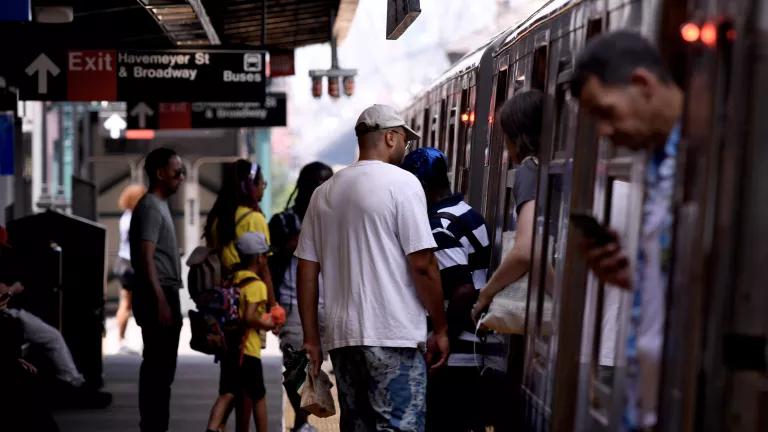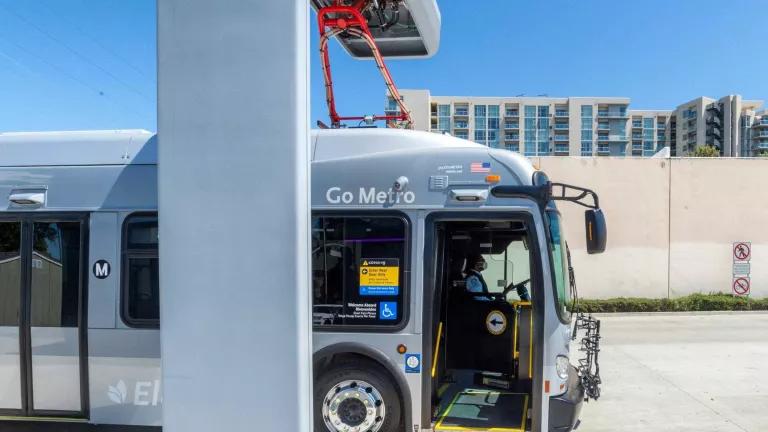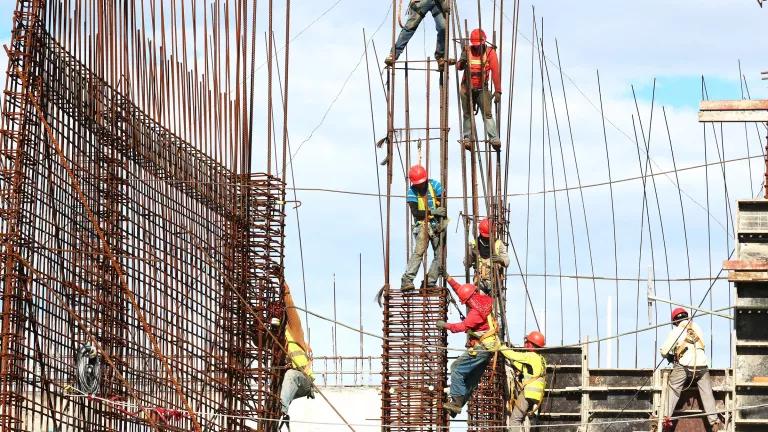We Cannot Short-Change Transit—Not Now
Given the urbanization of our nation, the overdue focus on racial inequity and the threat of climate change, our nation needs to invest much, much more in cleaner transportation options, especially public transit.

Given the urbanization of our nation, the overdue focus on racial inequity and the threat of climate change, our nation needs to invest much, much more in cleaner transportation options, especially public transit.
While some in Congress recognize this imperative, news reports indicate that a bipartisan infrastructure bill might slam this into reverse: locking in hundreds of billions of dollars for highways while setting transit up for long-term cuts in funding.
This would be disastrous for our cities, for essential workers, for clean air—and for those, like me, who rely on public transit to get to work every day.
People across the country depend on transit every day. In 2018 alone we took almost 10 billion trips by bus, train, or other means of travel. And this way of getting around benefits us all, whether we live in cities, suburbs, or rural areas. For example, while I bought a home which is just a few blocks from a metro stop served by WMATA in the Washington suburbs, more than half of the nation’s approximately 2,200 transit agencies are in rural areas. More than half of riders use transit because they need to (cars are expensive to own and maintain!) or because of they want to save money. That means transit is one of the best investments we make in equity. And not just economic equity—60 percent of riders are Black, Indigenous or People of Color.
(For these facts and more check out these resources: here and here).
So, what’s happening?
For the past 40 years, the federal highway and transit programs have been authorized together, stemming from a Reagan-era agreement that guaranteed transit at least 20% of funding from gas tax increases starting in 1982. There’s an important benefit to this funding: because gas tax revenues flow into the Highway Trust Fund, that funding—also referred to as “contract authority”—has been considered guaranteed and not subject to cuts in the annual appropriations process. (Both highways and transit also get some funding from sources that are subject to appropriations, but the bulk of those programs come from the Trust Fund.)
The federal highway and transit programs need to be reauthorized by the end of September when the current law, the FAST Act, expires. Two Senate committees have already passed sections of a reauthorization bill increasing funding for their respective programs. But the Senate Banking Committee, which has jurisdiction over transit, has been unable to act due to the insistence of its ranking member, Sen. Pat Toomey (R-Penn.), that transit funding should not be increased.
Adding to the complexity of the situation is the fact that the FAST Act reauthorization is being used as the base for the bipartisan infrastructure negotiations. President Biden and a bipartisan group of 22 Senators have agreed on a framework that would provide $579 billion in new spending for a range of infrastructure. To be clear: this new spending is on top of “baseline” spending, i.e. the spending that would occur if the FAST Act were simply extended as-is. (Calculating this “baseline,” however, is tricky and it’s difficult to say for certain what numbers negotiators are working with.)
Unlike the baseline, the bipartisan framework announced by the White House is clear: It allocated $110 billion in new spending to highways and $48.5 billion to transit. Laudably, that is a huge investment in buses and trains that serve us all. However, those numbers leave out an important detail: what portion of spending will come from the Trust Fund and, therefore, be guaranteed. Advocates have called for transit to be treated on par with highways, given how important it is to efforts to cut pollution. While a highway-level investment in transit is warranted, at the very least 20% of guaranteed funding from the Highway Trust Fund should go to transit. The INVEST Act passed by the House meets this test, but the Senate is balking and the bipartisan deal may be worse for transit than the agreement struck in 1982.
That’s absurd.
The amount of guaranteed funding for transit is important for two reasons:
- First, guaranteed funding is more useful to transit agencies than non-guaranteed funding; the guarantee allows them to plan and finance projects more cost-effectively.
- Second, whatever funding is guaranteed in this bill will become part of the baseline for the next bill. If transit loses ground in this round of negotiations, the starting line for transit next time around will be even farther from where it needs to be.
To its credit, the Biden administration has set ambitious climate goals and made racial equity a key goal. But we cannot achieve those goals without a greater commitment to transit. While it’s true that the amount of additional investment in transit is historically large, there’s less progress than meets the eye if the baseline is moved backward. (And, keep in mind, the framework also includes the largest highway investment in history, adding $110 billion on top of the existing highway program. Absent policies such as those in the INVEST Act, that spending will exacerbate pollution and worsen our climate crisis.)
Transit’s needs are well-documented (for example, the American Society of Civil Engineers reports a transit backlog of $176 billion, projected to grow to more than $270 billion by the end of this decade). Those who care about the climate crisis should be doing all they can to boost transit investment. Now is the time to take a leap forward by sticking with the deal in place since 1982 and delivering a boost to transit investment on top of it, not taking a big step back.


